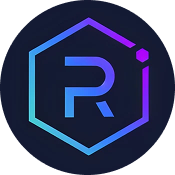In the realm of blockchain innovation, Zilliqa and Near emerge as pioneering platforms, each with its unique approach to tackling scalability, security, and usability. While Zilliqa leverages groundbreaking sharding technology to deliver high throughput and low fees, Near emphasizes user-friendly design and advanced sharding mechanisms to support an expansive ecosystem. These platforms are not just competing but also complementing the evolving needs of decentralized applications and enterprise solutions. This comparison dives deep into their architectures, features, and future roadmaps to help crypto enthusiasts and investors understand which aligns best with their ambitions.
Short on time? Jump to Zilliqa vs Near Comparison
Understanding Zilliqa and Near ?
Zilliqa, launched in 2017, is renowned for being the world's first sharded blockchain, designed explicitly to address blockchain scalability issues. Its architecture divides the network into smaller segments called shards, allowing parallel processing of transactions, which significantly increases throughput. Zilliqa's native language, Scilla, is built with security in mind, enabling formal verification to reduce vulnerabilities common in other smart contract languages. The platform's commitment to security, scalability, and low transaction fees has made it appealing for decentralized applications requiring high performance.
Near Protocol, on the other hand, is a more recent entrant that emphasizes usability and developer experience. Its core innovation, Nightshade 2.0, is an advanced sharding mechanism that increases scalability while reducing resource requirements for validators through stateless validation. NEAR's architecture focuses on making blockchain accessible for mainstream adoption, with features like human-readable account names, simple onboarding, and a focus on developer-friendly tools. As a Layer 1 blockchain, NEAR has quickly gained traction for its scalable ecosystem, particularly in NFTs, DeFi, and AI-related projects.
Both platforms utilize proof-of-stake consensus mechanisms, but their implementation and underlying philosophies differ. Zilliqa maintains a focus on security and formal verification, making it suitable for enterprise-grade applications. Near prioritizes seamless user experiences and developer accessibility, aiming to lower barriers to entry for decentralized app development. Their distinct approaches reflect their targeted use cases and community focuses, setting the stage for a comprehensive comparison.
As blockchain technology continues to evolve, both Zilliqa and Near are undertaking significant upgrades—Zilliqa with its upcoming Ethereum Virtual Machine (EVM) compatibility and faster finality, and Near with its ongoing scaling improvements and ecosystem expansion. These developments highlight their commitment to staying at the forefront of blockchain innovation, catering to different segments of the market while pushing the boundaries of what decentralized networks can achieve.
Key Differences Between Zilliqa and Near
Architectural Approach
- Zilliqa: Zilliqa employs a pioneering sharding architecture that divides the network into multiple shards, each capable of processing transactions in parallel, resulting in high throughput and scalability. Its focus on security is reflected in its use of the peer-reviewed Scilla smart contract language, enabling formal verification and reducing vulnerabilities. The platform's design aims to support enterprise-grade decentralized applications that demand high transaction speeds and low fees, making it ideal for financial services, gaming, and large-scale dApps.
- Near: Near adopts a dynamic sharding model called Nightshade 2.0, which introduces stateless validation to minimize resource requirements for validators. Its architecture emphasizes user-friendliness, with features like human-readable account names and simplified onboarding processes. Near's focus on developer experience and ecosystem growth makes it suitable for rapid application development, NFTs, and AI integrations, aiming for mass adoption through accessibility.
Consensus Mechanism
- Zilliqa: Zilliqa utilizes an improved version of Practical Byzantine Fault Tolerance (pBFT) combined with a Proof-of-Work (PoW) cycle for node identity establishment. This hybrid approach ensures instant finality and security, making it reliable for high-stakes applications. The consensus protocol is optimized to support a highly decentralized network with over 2,400 nodes, maintaining robustness even under stress.
- Near: Near operates on a Thresholded Proof-of-Stake (TPoS) consensus algorithm, which enhances security and decentralization. Its Nightshade sharding system allows multiple shards to process transactions independently, with validators confirming transactions efficiently. The focus on reducing validator resource requirements through stateless validation improves scalability and lowers entry barriers, fostering a broad validator base and ecosystem.
Smart Contract Language and Compatibility
- Zilliqa: Zilliqa's smart contracts are written in Scilla, a language designed for safety and formal verification, mainly targeting developers concerned with security. Recent upgrades aim to incorporate Ethereum Virtual Machine (EVM) compatibility, enabling Solidity-based dApps to run seamlessly on Zilliqa, broadening developer options.
- Near: Near uses AssemblyScript and Rust for smart contract development, providing familiar and flexible options for developers. Its native support for EVM compatibility is also underway, allowing Ethereum-based applications to migrate easily. Near’s developer ecosystem emphasizes ease of use, rapid deployment, and interoperability with other blockchains, fostering innovation.
Network Throughput and Finality
- Zilliqa: Zilliqa claims to support over 2,800 transactions per second, with transaction finality achieved in a single block thanks to its pBFT consensus. This rapid finality is crucial for applications requiring instant settlement, such as financial trading and gaming.
- Near: Near's Nightshade 2.0 upgrade significantly boosts transaction throughput, with estimates of up to 400% increase in transaction speed. Its stateless validation reduces latency, and finality is achieved within seconds, suitable for real-time applications like DeFi and AI-driven services.
Ecosystem and Use Cases
- Zilliqa: Zilliqa's ecosystem is tailored toward scalable decentralized applications, particularly in finance, gaming, and enterprise sectors. Its low gas fees and high throughput make it attractive for micro-payments and complex dApps requiring security and speed.
- Near: Near boasts a rapidly expanding ecosystem that includes NFTs, DeFi, gaming, and AI projects. Its user-friendly features and scalable architecture attract developers looking for quick deployment and broad user adoption, positioning it as a versatile platform for innovative applications.
Zilliqa vs Near Comparison
| Feature | ✅ Zilliqa | ✅ Near |
|---|---|---|
| Consensus Algorithm | pBFT + PoW hybrid ensuring instant finality | Thresholded Proof-of-Stake with Nightshade sharding |
| Smart Contract Languages | Scilla, with upcoming EVM support | AssemblyScript, Rust, and EVM compatibility |
| Transaction Speed | Over 2,800 TPS, finality in a single block | Up to 400% throughput increase with Nightshade 2.0 |
| Scaling Technology | Sharding with 4 shards, linear scalability | Nightshade 2.0 with stateless validation |
| Ecosystem Focus | Enterprise, gaming, financial dApps | NFTs, DeFi, AI, gaming, developer-friendly |
Ideal For
Choose Zilliqa: Ideal for enterprises and applications demanding high throughput and security, such as finance and large-scale decentralized platforms.
Choose Near: Best suited for developers and projects prioritizing usability, rapid deployment, and ecosystem growth, including NFTs and AI-driven applications.
Conclusion: Zilliqa vs Near
Zilliqa and Near exemplify two distinct paths toward scalable, secure, and user-friendly blockchain platforms. Zilliqa's pioneering sharding and formal verification focus on high throughput and enterprise readiness, making it an excellent choice for demanding decentralized applications. Conversely, Near's emphasis on developer experience, ecosystem expansion, and innovative sharding techniques cater to projects seeking rapid growth and broad accessibility.
Choosing between them depends on your specific needs—whether it's raw performance and security for large-scale apps or ease of use and ecosystem support for innovative startups. Both platforms are actively evolving, promising exciting developments that could redefine their roles in the blockchain landscape. As the space matures, these projects will likely continue to complement each other, pushing the boundaries of what blockchain technology can achieve.






